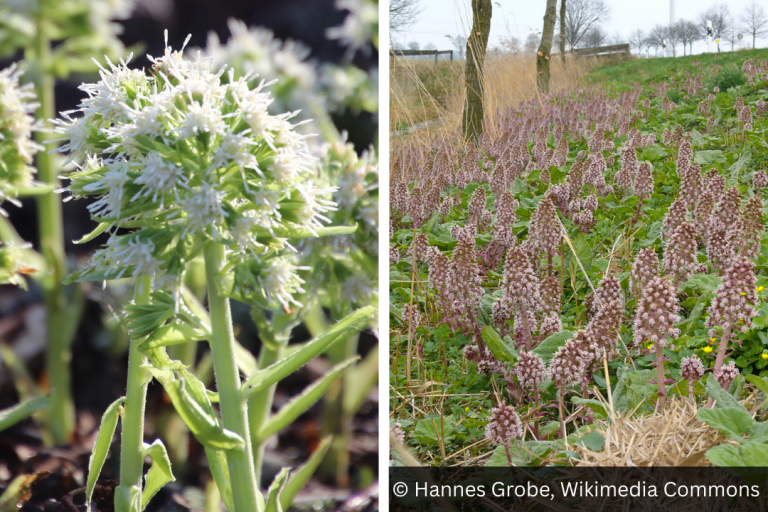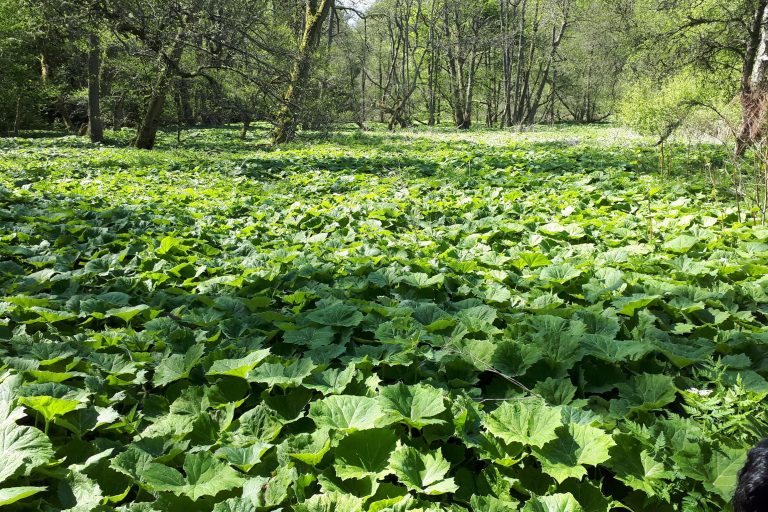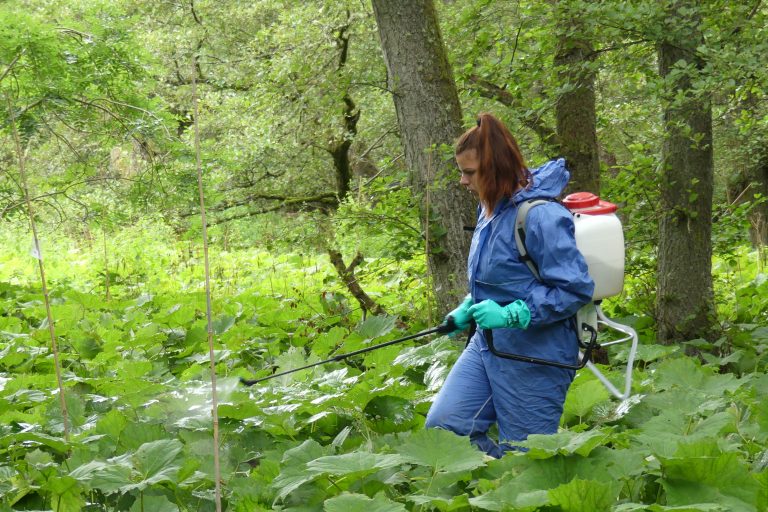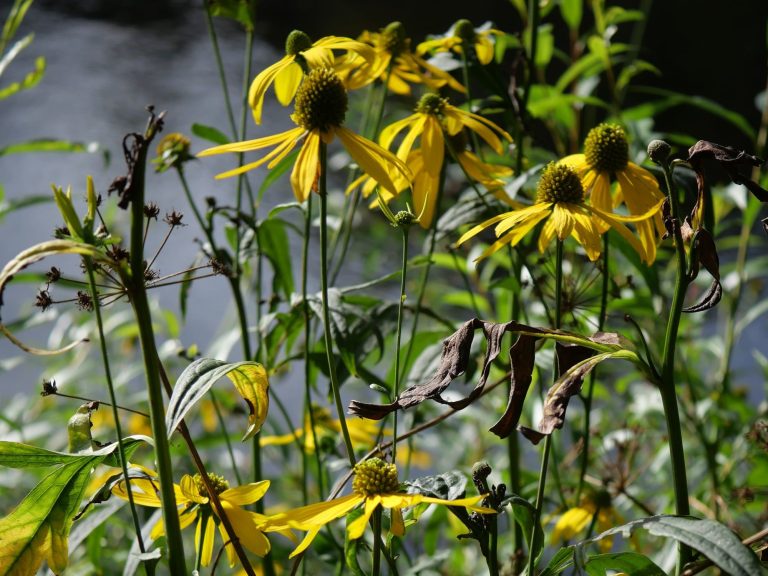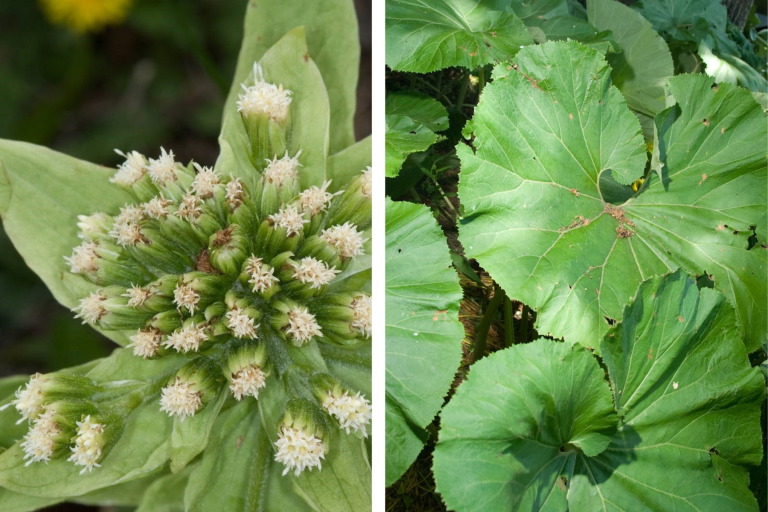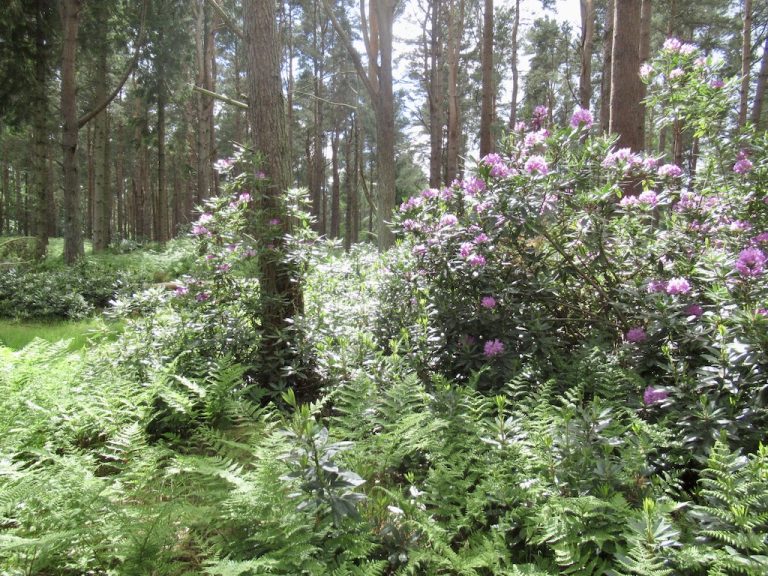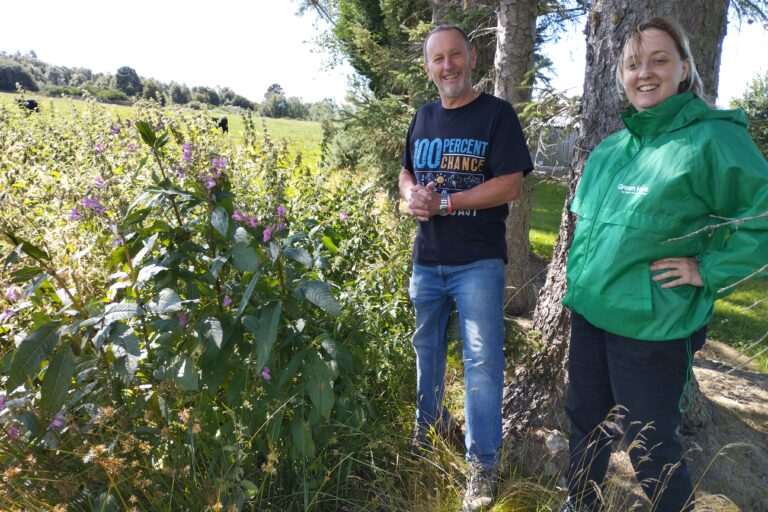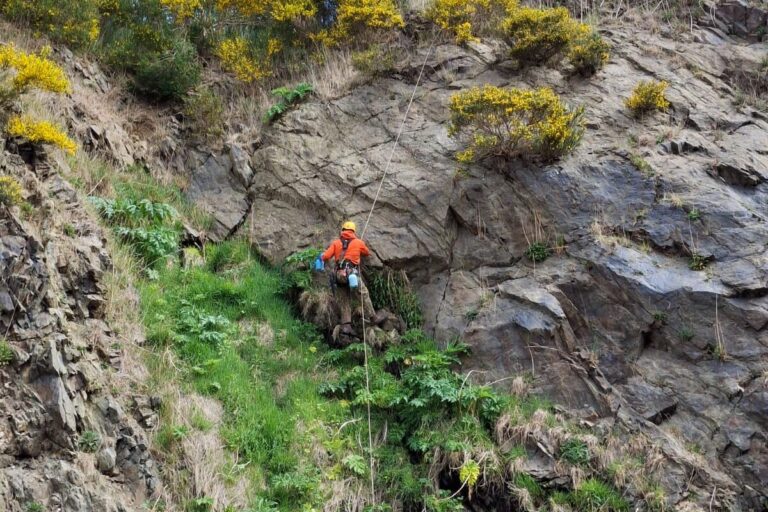Rhododendron
Rhododendron (Rhododendron ponticum) is a dense, evergreen, branched shrub which can grow to 5m tall. The flowers are pink to purple and present in clusters of 10-15, has solid stems forming a trunk when mature and leathery dark green leaves. Growing in dense thickets it shades out native plants, prevents natural regeneration of trees in woodlands and impacts ground vegetation. Its extensive root system and leaf litter is toxic to many other plants and it can harbour Phytophthora, a fungus-like pathogen, that affects many other trees and plants.
This is an invasive plant we are often asked about but it is not a target species. In Great Britain it occupies moorland, woods, screes, rocky banks, derelict gardens and stream sides and grows best in wet and mild areas in the west of Scotland. Control is by physical removal (by hand or using machinery), chemical application and stem injection with follow treatment necessary when stumps regrow or seedlings take root.
Large rhododendron control programmes are undertaken by bodies such as Forestry and Land Scotland, the National Trust for Scotland and the John Muir Trust, by partnerships such as the Alliance for Scotland’s Rainforest and by numerous estates and land managers.

